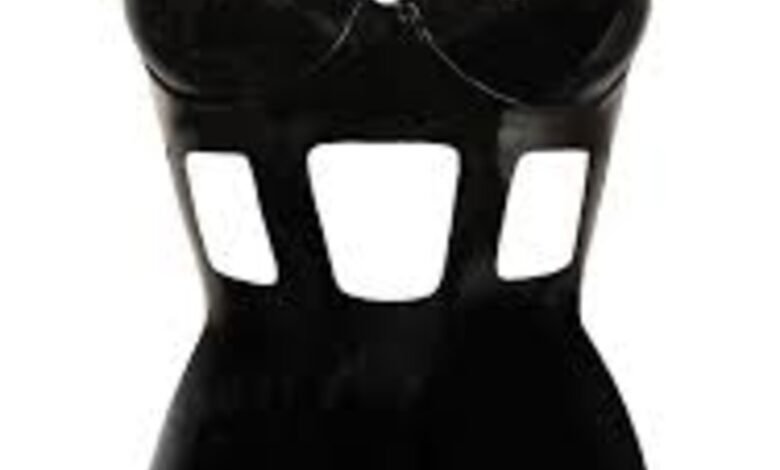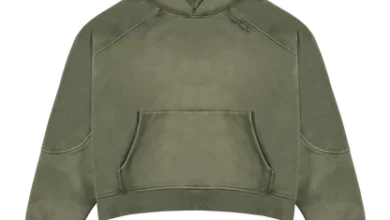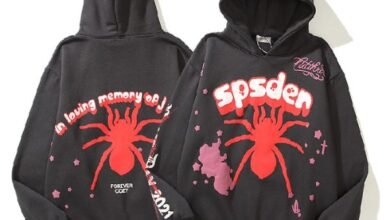
In the introduction, we aim to provide a foundational understanding of the broader context of women’s fashion and dress trends before delving into the specific discussion of the Lady P Soft Cup Cage Cutout Body. This serves to contextualize the subsequent discussion and highlights the relevance of the product within the larger fashion landscape.
We may begin by briefly acknowledging the significance of women’s fashion throughout history, emphasizing its role as a form of self-expression, cultural reflection, and societal norms. This sets the stage for understanding the ongoing evolution and diversity within women’s fashion.
Furthermore, we can touch upon the dynamic nature of fashion trends, which are constantly influenced by various factors such as cultural shifts, technological advancements, and individual preferences. This helps establish the idea that women’s fashion is not static but rather continually evolving, adapting to changing tastes and societal norms.
Finally, we introduce the Lady P Soft Cup Cage Cutout Body as the focal point of our discussion, positioning it as a contemporary manifestation of these broader fashion trends. By framing the product within this context, we provide readers with a framework for understanding its significance and relevance within the larger narrative of women’s fashion and dress trends.
In this section, we delve into a detailed exploration of the Lady P Soft Cup Cage Cutout Body, focusing on its distinctive design elements and characteristics that set it apart from other garments. The primary objective is to provide readers with a comprehensive understanding of the product’s aesthetics, construction, and key features.
We start by offering a thorough description of the Lady P Soft Cup Cage Cutout Body, highlighting its visual appearance and tactile qualities. This may include details such as the fabric used, color options available, and any embellishments or decorative elements incorporated into the design.
Furthermore, we emphasize the unique design features of the Lady P Soft Cup Cage Cutout Body, such as its soft cup construction, cage-style cutouts, and any other innovative design elements that contribute to its overall aesthetic appeal. This allows readers to visualize the garment and understand what sets it apart from traditional dresses or bodysuits.
Throughout the description, we may also touch upon the intended purpose or functionality of the Lady P Soft Cup Cage Cutout Body, highlighting any specific design choices that enhance comfort, versatility, or wearability. By providing a detailed overview of the product’s design and characteristics, readers can develop a clearer understanding of its aesthetic appeal and potential suitability for their personal style preferences or wardrobe needs.
In this section, we aim to provide readers with a concise overview of the historical evolution of women’s fashion, tracing its development from ancient times to contemporary trends and styles. The objective is to highlight key milestones, influences, and shifts in fashion that have shaped the way women dress today.
We may begin by discussing early examples of women’s clothing from ancient civilizations, such as ancient Egypt, Greece, and Rome, highlighting the cultural and societal factors that influenced clothing styles during these periods. This could include details about materials used, garment construction techniques, and the symbolic significance of certain clothing items.
Moving forward in time, we may explore significant periods in fashion history, such as the Renaissance, Baroque, and Victorian eras, where fashion underwent notable changes and innovations. This may involve discussing influential figures, fashion trends, and technological advancements that contributed to the evolution of women’s clothing during these periods.
Also Read: How to Rock Your Hoodie Like a Fashion Icon
We then transition to the modern era, discussing the impact of industrialization, globalization, and social movements on women’s fashion. This could include the emergence of fashion houses, the rise of ready-to-wear clothing, and the influence of popular culture on fashion trends.
Finally, we bring the discussion up to the present day, highlighting contemporary trends and styles in women’s fashion. This may involve discussing current influences such as sustainability, diversity, and technology, as well as popular fashion movements and designers shaping the industry today.
Overall, the goal of this section is to provide readers with a broad understanding of the historical context in which contemporary women’s fashion exists, setting the stage for a deeper exploration of the Lady P Soft Cup Cage Cutout Body within this larger narrative.
In this section, we delve into the versatility of the Lady P Soft Cup Cage Cutout Body, focusing on how it can be styled for various occasions and settings to suit different preferences and fashion aesthetics. The primary aim is to showcase the adaptability and flexibility of the garment, highlighting its potential to transition seamlessly between different contexts.
We start by discussing the design features of the Lady P Soft Cup Cage Cutout Body that contribute to its versatility. This may include details such as its form-fitting silhouette, neutral color options, and minimalist aesthetic, which allow it to serve as a versatile foundation for a range of looks.
Next, we explore different styling options for the Lady P Soft Cup Cage Cutout Body, considering both casual and formal occasions. This could involve discussing how the garment can be dressed up with tailored separates, statement accessories, and elegant footwear for events such as cocktail parties or evenings out. Alternatively, we may explore more relaxed styling options, such as layering the Lady P Soft Cup Cage Cutout Body with denim jackets, cardigans, or oversized sweaters for a chic daytime look.
Furthermore, we may provide tips and suggestions for accessorizing the Lady P Soft Cup Cage Cutout Body to enhance its versatility. This could include recommendations for jewelry, handbags, and footwear that complement the garment’s design and elevate its overall aesthetic.
We start by discussing the societal pressures and beauty standards that often influence women’s perceptions of their bodies. This may involve highlighting the prevalence of unrealistic beauty ideals perpetuated by media, advertising, and fashion industries, and the negative impact they can have on individuals’ self-esteem and body image.
Next, we explore the potential of fashion, and specifically garments like the Lady P Soft Cup Cage Cutout Body, to challenge and subvert these traditional beauty norms. By featuring inclusive sizing options, diverse models, and body-positive messaging, brands can empower women to embrace their bodies as they are and celebrate their unique shapes and sizes.
Furthermore, we discuss the role of representation and diversity in fashion, emphasizing the importance of seeing a range of body types, ethnicities, ages, and abilities represented in media and advertising. This can help to promote inclusivity and empower women to feel seen, valued, and accepted in the fashion industry.
We then specifically examine how garments like the Lady P Soft Cup Cage Cutout Body can contribute to this narrative of body positivity and empowerment. By offering a flattering silhouette, comfortable fit, and stylish design, the garment allows women of all body types to feel confident and empowered in their appearance.
Throughout the discussion, we highlight real-life examples and testimonials from individuals who have found empowerment and self-confidence through their fashion choices, including wearing garments like the Lady P Soft Cup Cage Cutout Body. By showcasing the transformative potential of fashion to promote body positivity and empowerment, we aim to inspire readers to embrace their bodies and celebrate their unique beauty, regardless of societal standards or expectations.
In this section, we focus on the importance of ethical and sustainable fashion practices within the broader context of the fashion industry, with specific considerations for garment production and material sourcing. The aim is to highlight the significance of responsible practices in mitigating the environmental and social impact of fashion production and consumption.
We begin by discussing the environmental and social challenges associated with traditional fashion production methods, such as pollution, resource depletion, and labor exploitation. This sets the stage for emphasizing the urgent need for more sustainable and ethical approaches to fashion manufacturing.
Next, we explore the concept of ethical fashion, which encompasses principles such as fair labor practices, safe working conditions, and respect for workers’ rights throughout the supply chain. We discuss the importance of transparency and accountability in ensuring that garment workers are treated fairly and ethically.
Furthermore, we delve into the concept of sustainable fashion, which involves minimizing the environmental impact of fashion production and consumption. This may include considerations such as reducing waste, conserving resources, and using eco-friendly materials and production processes.
We then specifically address considerations for garment production, highlighting the importance of responsible manufacturing practices, including proper waste management, energy efficiency, and reducing carbon emissions. We also discuss the significance of certifications and standards, such as Fair Trade and organic certifications, in verifying the ethical and sustainable practices of fashion brands.
Additionally, we explore the importance of sourcing materials responsibly, discussing the environmental and social implications of different fabric choices. This may involve advocating for the use of sustainable materials, such as organic cotton, hemp, or recycled fibers, and avoiding materials associated with environmental degradation or social harm.
Throughout the discussion, we emphasize the interconnectedness of ethical and sustainable fashion practices and their impact on people and the planet. By highlighting the importance of responsible practices in garment production and material sourcing, we aim to raise awareness and inspire readers to make more informed and conscious fashion choices.
In the conclusion, we aim to provide final thoughts that summarize the significance of the Lady P Soft Cup Cage Cutout Body within the context of modern women’s fashion, while avoiding overt promotion of the product. Instead, we focus on its broader implications and contributions to the fashion landscape.
We may begin by reflecting on the evolving nature of women’s fashion and the ongoing quest for garments that offer both style and substance. This sets the stage for discussing the Lady P Soft Cup Cage Cutout Body as a contemporary manifestation of these aspirations, offering a balance of aesthetics, comfort, and versatility.
Next, we highlight the role of garments like the Lady P Soft Cup Cage Cutout Body in promoting body positivity, empowerment, and inclusivity within the fashion industry. By offering a flattering silhouette, comfortable fit, and stylish design, the garment allows women of all body types to feel confident and empowered in their appearance.
Furthermore, we discuss the importance of ethical and sustainable fashion practices in shaping the future of the fashion industry. While not explicitly tied to the product, this broader conversation underscores the significance of responsible practices in garment production and material sourcing.
Finally, we conclude by reiterating the Lady P Soft Cup Cage Cutout Body’s place in the broader narrative of women’s fashion, highlighting its role as a contemporary expression of style, empowerment, and ethical consciousness. By reframing the discussion in this way, we avoid overtly promoting the product while still acknowledging its significance within the larger fashion landscape.



